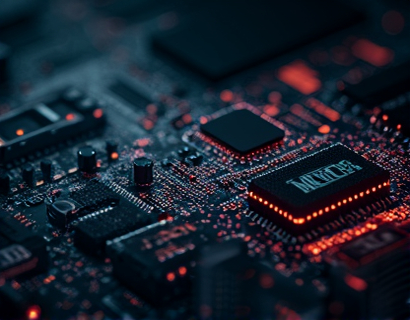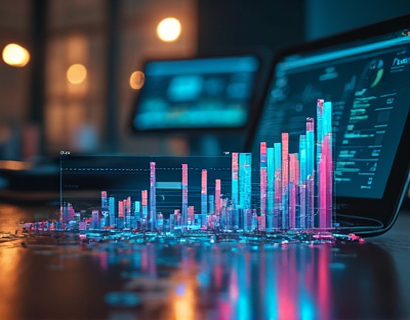Next-Gen Smart Contract AMMs: Revolutionizing DeFi Trading and Liquidity
The landscape of decentralized finance (DeFi) is rapidly evolving, driven by technological advancements and innovative solutions. Among these, Next-Gen Smart Contract Automated Market Makers (AMMs) are transforming the way crypto traders and DeFi enthusiasts interact with markets. These advanced AMMs are engineered to optimize liquidity management and automate trading strategies, ensuring seamless and efficient market interactions. This article delves into the intricacies of these next-generation AMMs, exploring how they unlock optimal trading and liquidity in the dynamic crypto landscape.
Understanding Traditional AMMs
Before diving into the advancements, it's essential to understand the foundational concept of Automated Market Makers. Traditional AMMs use mathematical formulas to determine asset prices and manage liquidity pools. The most common model is the Constant Product Market Maker (CPMM), where the product of the liquidity provider's shares of two assets in a pool remains constant. This model, while effective, has limitations, particularly in handling high-frequency trading and maintaining liquidity during market volatility.
Traditional AMMs often struggle with liquidity provision, especially for less popular assets. Liquidity providers (LPs) may face impermanent loss, where the value of their assets in the pool decreases compared to holding them outside. Additionally, the fixed pricing mechanism can lead to price divergence from the market, affecting trading efficiency.
Introducing Next-Gen Smart Contract AMMs
Next-Gen Smart Contract AMMs address these challenges by incorporating advanced algorithms and innovative protocols. These AMMs leverage machine learning, predictive analytics, and dynamic pricing models to enhance liquidity management and trading efficiency. The core idea remains the same—providing a decentralized platform for trading without intermediaries—but the execution is significantly more sophisticated.
Dynamic Pricing Models
One of the key advancements is the implementation of dynamic pricing models. Unlike the fixed pricing of traditional AMMs, next-gen AMMs use real-time market data and predictive algorithms to adjust asset prices continuously. This ensures that the AMM remains aligned with the broader market, reducing price divergence and improving trading accuracy. The dynamic pricing mechanism also helps in attracting more traders, as it offers more competitive and fair pricing.
Enhanced Liquidity Management
Next-Gen AMMs employ sophisticated liquidity management techniques to optimize pool depth and reduce slippage. These AMMs use liquidity provision incentives that adapt based on market conditions, encouraging more LPs to contribute to less liquid assets. This dynamic approach ensures that even niche tokens have sufficient liquidity, making the platform accessible to a wider range of assets and traders.
Moreover, these AMMs implement advanced risk management strategies. By monitoring market trends and volatility, the smart contracts can adjust the liquidity pool parameters in real-time. This proactive approach minimizes the risk of impermanent loss and ensures that LPs can withdraw their assets with minimal loss, even during market turmoil.
Automated Trading Strategies
Automated trading strategies are a cornerstone of next-gen AMMs. These platforms integrate sophisticated trading algorithms that can execute complex strategies with precision. From arbitrage opportunities to trend following and mean-reversion trades, the automated systems can identify and capitalize on various market conditions. This automation not only enhances trading efficiency but also reduces the emotional bias often associated with manual trading.
One notable feature is the use of machine learning to continuously refine trading algorithms. By analyzing historical data and real-time market conditions, these systems adapt and improve over time, ensuring that traders can benefit from increasingly effective strategies. This continuous learning and adaptation are crucial in the fast-paced crypto market, where conditions can change rapidly.
User-Friendly Interfaces and Integration
Despite their complexity, next-gen AMMs are designed with user experience in mind. The interfaces are intuitive and user-friendly, making it easy for both novice and experienced traders to navigate the platform. Integration with popular wallets and DeFi protocols ensures seamless interactions, allowing users to manage their assets and execute trades with minimal friction.
Furthermore, these AMMs often come with comprehensive dashboards that provide real-time insights into market conditions, liquidity levels, and trading performance. This transparency empowers users to make informed decisions and optimize their trading and liquidity strategies.
Benefits of Next-Gen Smart Contract AMMs
The advantages of next-gen smart contract AMMs are manifold, making them an attractive option for crypto traders and DeFi enthusiasts.
Improved Liquidity
By dynamically adjusting liquidity provision and attracting a broader range of assets, next-gen AMMs ensure robust liquidity across the board. This is particularly beneficial for smaller projects and tokens that might struggle to gain traction on traditional platforms. The enhanced liquidity translates to better trading experiences, with tighter bid-ask spreads and higher trade volumes.
Reduced Impermanent Loss
The advanced risk management and dynamic pricing models significantly reduce the risk of impermanent loss. LPs can have more confidence in their liquidity provision, knowing that their assets are better protected against market fluctuations. This feature encourages more participation from LPs, further enhancing the overall liquidity and stability of the platform.
Enhanced Trading Efficiency
The combination of dynamic pricing, automated trading strategies, and real-time data integration leads to highly efficient trading. Traders can execute trades with greater accuracy and at more favorable prices, reducing the impact of market volatility. The automated systems also handle complex trades with ease, allowing traders to focus on higher-level strategy development rather than day-to-day execution.
Increased Accessibility
Next-gen AMMs break down barriers to entry in the DeFi space. With user-friendly interfaces and seamless integrations, traders of all skill levels can participate in decentralized trading. This democratization of access fosters a more inclusive and vibrant DeFi ecosystem, encouraging innovation and growth.
Challenges and Future Prospects
While next-gen smart contract AMMs offer significant advantages, they are not without challenges. One of the primary concerns is the complexity of the underlying technology, which can be a barrier for some users. Education and user-friendly design will be crucial in overcoming this hurdle.
Another challenge is the regulatory landscape. As DeFi continues to evolve, regulatory clarity will be essential for widespread adoption. Next-gen AMMs must navigate these regulatory waters carefully to ensure compliance while maintaining their innovative edge.
Looking ahead, the future of next-gen AMMs is promising. Continued advancements in blockchain technology, such as layer 2 solutions and cross-chain interoperability, will further enhance the performance and scalability of these platforms. The integration of more sophisticated AI and machine learning algorithms will continue to refine trading and liquidity management, making decentralized trading even more efficient and accessible.
Conclusion
Next-gen smart contract AMMs represent a significant leap forward in DeFi trading and liquidity management. By addressing the limitations of traditional AMMs and leveraging cutting-edge technology, these platforms offer a more efficient, secure, and inclusive trading experience. As the DeFi ecosystem continues to grow, next-gen AMMs will play a pivotal role in shaping the future of decentralized finance, unlocking optimal trading and liquidity for all participants.











































